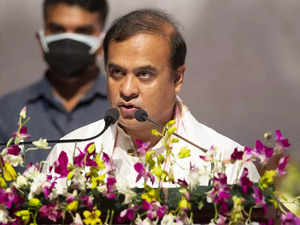 AP
APSarma said that in the present scenario, wherein the entire globe is on the look for healthy food, that are at par with the international standards of food safety and quality, free from any chemical residues and other contaminants; the North Eastern India can emerge as the major supplier of organic foods to the globe. He made this observation while speaking at the International Buyer Seller Meet and Spices Conclave organized by the Spices Board of India for the North Eastern Region at Guwahati.
The conclave was participated by leading foreign buyers, major exporters, farmers, and traders from across the North East. The event was organized in line with the vision of Prime Minister Narendra Modi to promote India’s rich heritage of traditional spices, herbs and medicinal plants across the globe as well as to facilitate growth and development of Spices, Condiments and similar products from the Region.
Stating that India has been known globally for its home grown spices, Sarma said that spices and herbs in the country play roles that go way beyond just cooking, and they are regularly used for their curative and therapeutic properties. He mentioned that India produces about 75 of the 109 varieties of spices listed by the International Organization for Standardization. The country has today emerged as the world’s largest producer, consumer and exporter of spices and overall production of different types of spices has been growing rapidly over the last few years, he remarked.
Sarma said that North Eastern Region has acquired special attention in the global map owing to the quality of spices that are considered organic and amongst the many unique products and features for which the region is famous for, spices are of special recognition having global demand.
The Chief Minister further informed that Assam produces nearly 3.1 lakh metric tonnes of spices annually. The state holds a major share in the production of spices such as Ginger, Turmeric, Coriander, Mustard, Chilli, Garlic, etc. He also said that being the gateway of the North East India, with better connectivity and fast developing infrastructural facilities; the state has the potential to be a major hub for post-harvest processing and value addition of spices from the region and can become one of the major exporting hubs.
Sarma said that steps have been taken to make best use of Prime Minister's Developmental Initiative for North East (PM-DevlNE), One District One Product (ODOP) scheme and to convert the ‘by-default organic’ tag of the spices produced in the region to ‘certified organic’ or ‘organic by design’ to realize maximum potential of spices sector. He informed that under ODOP scheme, several districts in Assam have identified spices as their focus crop, such as Turmeric from Bongaigaon; Mustard seeds and Mustard products from the districts of Darrang, Dhemaji, Dibrugarh, and Majuli; Ginger from the districts of Karbi Anglong, West Karbi-Anglong, and Dima Hasao ; Chilli from Dhubri and Jorhat.
Lauding the Spices Board for its initiative to start a Quality Evaluation Laboratory for Spices at Guwahati, the Chief Minister said that the laboratory will be of immense help and benefit to the North Eastern Region as this will make available state-of-the-art testing facilities for spices that are at par with the international standards, in the region itself.
Saying that due to lack of adequate infrastructure & industry presence for processing and value addition of spices, presently most of the produce goes out on raw or semi-processed stage resulting in low income to the farmer and producer, Sarma stressed on proper coordination between Spices Board, Farmer Producer Organizations and Agriculture as well as Industry Department.
Tage Taki, the Minister for Agriculture, Horticulture, Animal Husbandry & Veterinary, Dairy Development & Fisheries, Arunachal Pradesh while addressing the participants of the IBSM stressed on the need for adequate technology and institutional support to further develop the spice sector of the North Eastern region.
D. Sathiyan IFS, Secretary, Spices Board said, “International Buyer Seller Meet and Spices Conclave’ is envisaged to promote the indigenous spices of the eight North Eastern states, especially the GI tagged varieties of Sikkim Large Cardamom, Assam Karbi Anglong Ginger, Naga Mircha, Bird’s Eye Chilli (Mizo Chilli), Hathei Chilly and Dalle Khursani”. He further said “The programme aims to create direct trade links for the indigenous, high-quality spices of the region with both national and international buyers”.
Read More News on
Download The Economic Times News App to get Daily Market Updates & Live Business News.
Subscribe to The Economic Times Prime and read the ET ePaper online.
Read More News on
Download The Economic Times News App to get Daily Market Updates & Live Business News.
Subscribe to The Economic Times Prime and read the ET ePaper online.









 Get Unlimited Access to The Economic Times
Get Unlimited Access to The Economic Times
